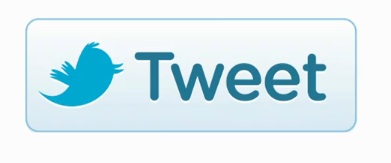
Slowly but surely, Twitter is taking control of all the key features that make it such a powerful communication medium. Today, it is introducing the Tweet button, a way for Websites to get visitors to share stories and links with one click. Of course, this already exists in various forms, the most popular of which is the Retweet button created by TweetMeme, which is on so many sites (including ours) that it currently generates 750 million impressions a day. Well, that is all very likely going away. “We expect people to switch,” says Tweetmeme founder Nick Halstead, “and we support that.”
Twitter is killing TweetMeme’s Retweet button, but with love. It is licensing some of the technology developed by TweetMeme and has a business agreement in place. However, the code that powers the new Tweet button was written from scratch by Twitter. TweetMeme Pro will continue to exist for Websites that want more customized solutions and analytics, but TweetMeme is shifting is business to a new product that has yet to launch called Datasift, which will focus on curating different realtime streams. From Twitter’s perspective, head of product Jason Goldman says, “We think that there is an experience that we can offer that is more integrated with the Twitter accounts people already have.”
In addition to the the ability to Tweet out links, Twitter’s new button also has another feature. It allows the sites which install them to suggest Twitter accounts to follow, perhaps each site’s official account or the accounts of different writers at blogs and news sites.
The Tweet button is just the latest example of Twitter filling holes in its product by poaching the best ideas from the eco-sytem of startups which have built successful businesses on top of Twitter. The same thing happened with bit.ly and short links and when it decided to create its own official mobile apps for the iPhone (by acquiring Tweetie) and Blackberry. Interestingly, the default link shortener the Tweet button uses is Twitter’s own http://t.co, which could prove to be another blow to bit.ly (although it is technically possible for sites that use bit.ly links to keep doing so).
The message this sends out to Twitter developers is that if they create a successful product, Twitter will absorb it. That is not necessarily a bad thing. At least in this case, Twitter worked with the company it will displace to soften the blow. Halstead says it is not really an issue. “The buttons were never our core business, we make our money from selling filtered data – not from buttons. If buttons made you money we would be very rich.” The value is in the data, which he still gets from Twitter via the firehose, which will power his new product.